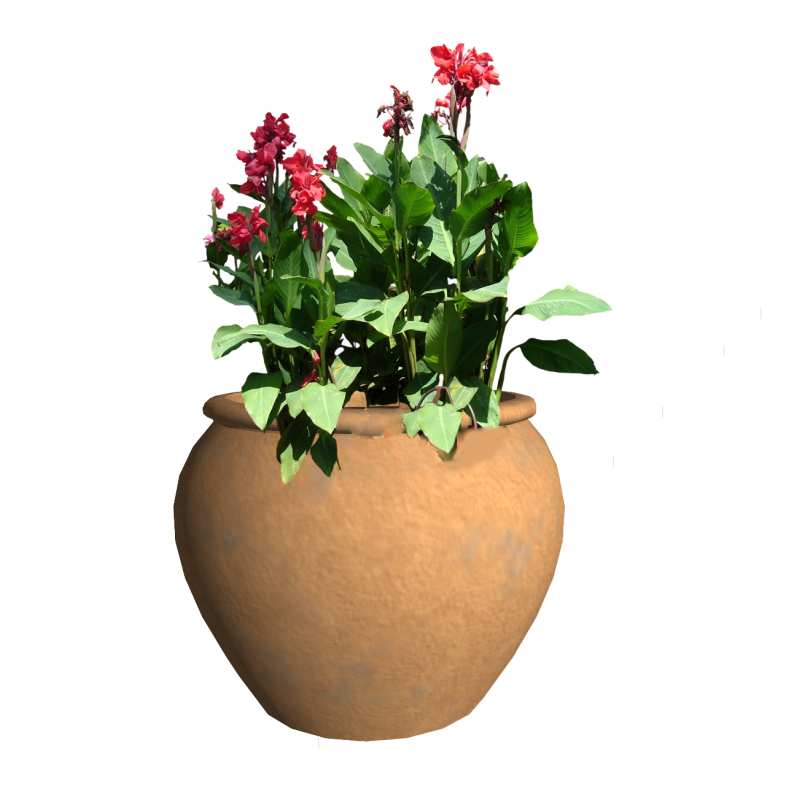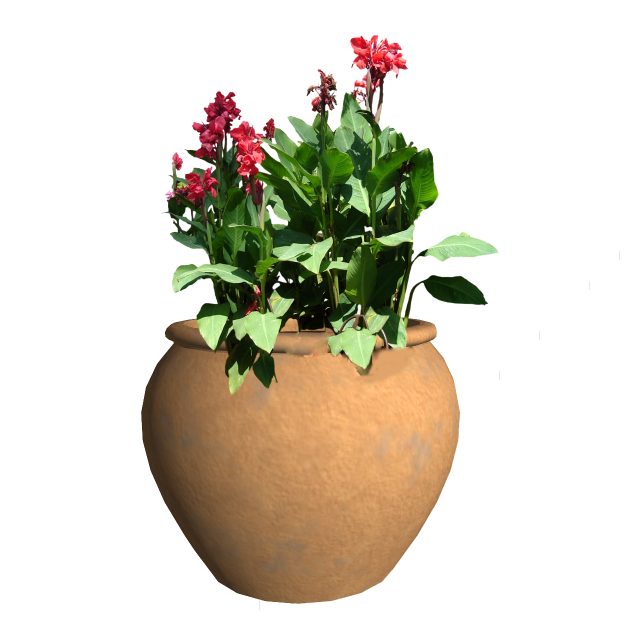Last updated on December 14th, 2024 at 08:18 am
Canna Lily Plant Care how to water and prune. The biggest care tip is that these plants like regular watering and fertilizing. They can tolerate some shade but will need at least 5-6 hrs. of sunlight for the best results. They are considered perennials in and around the Southwest regions, meaning they will come back season after season.
When do Canna Lily’s Bloom?
The canna lilies bloom late summer season and into mid-fall. If you deadhead the expired blooms. The rhizomes and stems beneath the soil will multiply each season. They love to be planted during the sweltering summer seasons and will thrive provided they get plenty of water.
It is not a Xeriscape plant but will look good with other types of low-watering plants like Lantanas, Verbena, and Salvias.
They will grow up to 3-4 ft. tall depending on the variety so it is best to place them in the background or in front of shorter annuals or perennials.
Canna lilies love the full sun but can tolerate some shade, especially during the mid-summer months.
Where to place these plants?
It is best to plant them where there is plenty of water. Near a water feature is excellent they love the overspill of water from water fountains and ponds. These plants love good loamy well-watered soil but not soggy. They are related to bananas, and arrowroot plants and do well throughout the American Southwest.
One big problem is rust. It is a fungus caused by the pathogen called Puccinia thaliae. This fungus caused the plant to wilt and turn a yellow color on the foliage. The most common cause is too much rain or overhead watering. It is best to place them in full sun as too much shade will make them prone to Fungal diseases.
You can trim off the severely damaged leaves and toss them into a plastic bag and then into the trash bin. Never add these leaves to a compost pile or leave them lying around the yard.
Mealybugs will attack these plants. These insects produce a white cotton-like substance. They will suck on the foliage and eventually kill the plant. Spray with neem oil or insecticidal soaps to kill these pests. Sometimes you will have to spray them with something non-organic as mealybugs are tuff to remove once your plant is infected. Early Detection and acting immediately is the best thing to do. Learn about disease and insects on plants.
Canna lilies are perennials meaning they will survive colder regions. The USDA gardening zone is 8-10. In warmer climates, you can trim your cannas after the first freeze. Cut them down to almost ground level. Leave about 2-3″ above ground. They will bounce back in late spring or early summer.
Planting them in the ground in full sun and partial shade is ok. Plant them around the cement entrance or against wood, concrete, and any type of fence… again, they like full sun but can tolerate some shade.
Canna lilies do not mind being planted in a container. In fact, they will thrive in a pot. In colder regions where they are considered an annual, you can dig them out before the first freeze dig up the rhizomes (roots) and place them in a paper sack, and save them indoors. Take them out after the last freeze and re-plant them in the ground.
Problems with Canna Lilly
Canna Lily plants are beautiful and vibrant additions to any garden, but like any plant, they can encounter a few problems. To ensure that your Canna Lily plants thrive and stay healthy, it is essential to understand the common issues they may face and how to address them.
One of the most common problems with Canna Lily plants is poor drainage. These plants prefer moist soil, but if the water does not drain properly, it can lead to root rot and other fungal diseases. To prevent this, plant your Canna Lily in well-draining soil and avoid overwatering.
Another issue that can arise with Canna Lily plants is nutrient deficiency. These plants require regular fertilization to maintain their vibrant colors and lush foliage. If you notice yellowing leaves or stunted growth, it may be a sign that your Canna Lily is not getting enough nutrients.
To remedy this, consider using a balanced fertilizer specifically formulated for flowering plants. Follow the instructions on the package and apply the fertilizer at the recommended intervals.
Pests can also pose a threat to Canna Lily plants. Aphids, spider mites, and caterpillars are common pests that can infest these plants and cause damage. Regularly inspect your Canna Lily for signs of pest infestation, such as curled leaves or sticky residue.
Insects on Canna Lillies
If you notice any pests, consider using organic insecticides or natural remedies like neem oil to control their population. Additionally, practicing good garden hygiene by removing dead leaves and debris can help prevent pest infestations.
Lastly, Canna Lily plants can be susceptible to diseases such as leaf spot or bacterial blight. These diseases can cause spots or discoloration on the leaves and may eventually lead to leaf drop. To prevent the spread of diseases, avoid overhead watering and ensure proper air circulation around the plants. If you notice any signs of disease, promptly remove and dispose of affected foliage to prevent further spread.
By proactively caring for your Canna Lily plants and promptly addressing any problems, you can ensure that they thrive and provide a stunning display in your garden. Remember to provide proper drainage, regular fertilization, monitor for pests, and take steps to prevent disease.
With a little care and attention, your Canna Lily plants will reward you with their vibrant blooms and lush foliage.
Canna Lily plants arrive at most Nurseries and retail gardening stores about mid-to-late summer.
Did you know Canna lilies are not true lilies? Learn more over at wikipedia.

Greenhouse Manager, Master Gardener, and Webmaster.
If you have any questions or enjoyed this post, feel free to share your thoughts in the comments below.








I love the photos and how to care for trees and plants,
Very informative. Abundant varieties! I’m in Love!
All you need to do after reading is order.